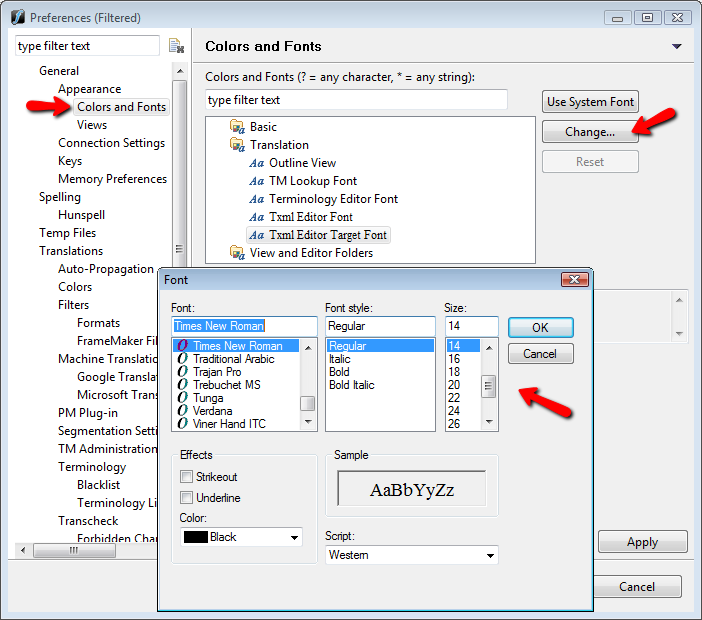
And note some of the files mentioned there could be empty. Try following #Load resource file and #xinitrc from above. It is not rare for xrdb -query to output nothing.
#Uxterm change font size install#
If you want another font, install it in your Windows. Then you click on the font tab and there you can change the font.

*headingFont: -*-fixed-bold-r-*-*-*-100-*-*-*-*-iso8859-1įor more information about wildcard matching rules see XrmGetResource(3) § MATCHING_RULES. If you want to apply this same rule to all programs that contain the resource headingFont, regardless of its class, you could write: Using the previous example, if you want to apply the same font to all programs (not just XScreenSaver) that contain the class name Dialog which contains the resource name headingFont, you could write: ? is used to match any single component name, while * is used to represent any number of intervening components including none. Question mark ( ?) and asterisk ( *) can be used as wildcards, making it easy to write a single rule that can be applied to many different applications or elements. Note: For more information about Xresources file syntax see XrmGetDatabase(3) § FILE_SYNTAX. A colon ( :) is used to separate the resource declaration from the actual value. ) is used to signify each step down into the hierarchy - in the above example we start at name, then descend into Class, and finally into the resource itself.

The resource substring may contain a separator ( name and Class will never contain a separator). The syntax of an Xresources file is as follows:

xterm(1) § RESOURCES is a good example, as it contains a list of X resources and their default values. To see the default settings for your installed X11 applications, look in /usr/share/X11/app-defaults/.ĭetailed information on program-specific resources is usually provided in the man page for the program.

Otherwise, programs launched after xrdb may look for resources before it has finished loading them.
#Uxterm change font size windows#
I assume Windows sets the current version automatically to the newest version, and in that case, you need to manually re-create the same key for the newer version to get it to work again.Note: Do not background the xrdb command within ~/.xinitrc. I found there are many versions installed on my desktop, probably by the Windows Updater, and the key gets ineffective when the Windows Updater installs a newer version. Mine is Debian, and it worked too.Īlso, make sure that you're creating the key for the WSL version that you're currently using. You may need to search for a proper directory under Console if your WSL is not Ubuntu.


 0 kommentar(er)
0 kommentar(er)
